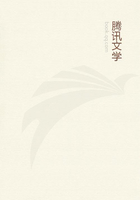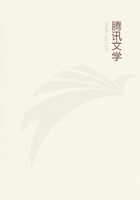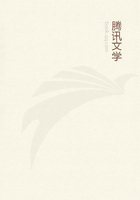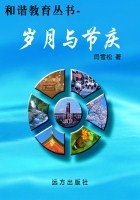"It passes through the most desirable region, with the hills and mountains for forty miles, containing inexhaustible quantities of timber. We noticed tall cedar and oaks of every deion; one kind more interesting than the others, being a white oak from twenty to forty feet in the body. Pine and spruce, with superior white ash and walnut, were found, and the most gigantic cotton-woods, particularly on the Sonoita. * * * * "The mountains in the neighborhood are filled with minerals, and the precious metals are said to abound. The famous Planchas de Plata and Arizona silver mines, which the Count Raouset de Boulbon attempted to take possession of, are in this section of country, not many miles below the present limits, and at several of the old ranchos and deserted mining villages which we visited, were found the argentiferous galena ore and gold. The Sierra Santa Rita runs along to the east of the Santa Cruz valley, and forms a part of this interesting region. It is very high and bold, filled with fertile valleys and flowing rivulets, and covered with a dense growth of timber. I saw much of this district, when here in 1851, on the survey of the boundry."* * * * * * * *
The country bordering immediately the head of the Gulf of California, through which Gray was probably the first to penetrate, lies adjacent to the proposed Arizona Territory, but not a part of the same, being a portion of the State of Sonora.┆He thus describes that section:
"The Indians represent rich Placers existing throughout this region, and large numbers of them had lately come in with considerable quantities of the dust. They were trading it for trifles to the Mexicans. I got some specimens of it which was the same as the California Gold. This was not the time of year (June)for them to work the mines, but in the fall, after the rain has commenced. The greatest drawback to the profitable working of the Placers of this district, is the scarcity of water. If artesian wells succeed, there is little doubt that it will create an important change. West from Tuseon and Tubac, towards the Gulf of California, the country presents more the appearance of a barren waste or desert than any district I have seen. It nevertheless has occasional oases, with fine grazing lands about them, and the mountains, which are more broken and detached, have distinct marks of volcanic origin. The ranges though short, have generally the same parallel direction as those further east. It is the country of the Papago Indians, a peaceful and friendly tribe, extending down to the Gulf coast, where they are mixed up somewhat with the Cocopas of the Colorado. From Sonoita Iexplored to the Gulf shore, near the mouth of Adair Bay. It was 62 miles, following a dry arroya most of the way, and the point at which I struck the Gulf was in latitude 31 degrees 36 minutes 34 minutes. The "Bay" is about 15 miles across, and from all Icould learn, 15 miles long, and represented as having four fathoms of water. It is completely encircled by a range of sand hills, reaching north-west to the Colorado river and south-east as far as the eye could discover. These "sables" are probably eighty or ninety miles in extent, by five to ten broad.
"Notwithstanding it appears to be the most desolate and forlorn-looking spot for eighty miles around the head of the Gulf, the sand hills looking like a terrible desert, nature seems even here, where no rain had fallen for eight months, to have provided for the sustenance of man, one of the most nutritious and palatable vegetables.
"East of the Tinaja Alta or high tank range, lie the famous Sierras del Ajo, now United States territory. These mountains derive their name from the vast deposits of red oxide and green carbonate of copper found about them, and which the Indians have made use of to paint (ajo) themselves with. The mines are unquestionably of great value, and must become important, more particularly from their being situated in the neighborhood of the contemplated railway. The tall Cereus Giganteus and Agave Americana are found in abundance. From the latter plant the natives make the pulque, mezcal and agua-diente; and the petahaya or cereus, produces a fruit from which is made a very pleasant preserve. At the Pimo and Maricopa villages are found wheat, corn, tobaco, and cotton, besides melons, pumpkins, beans, etc.
The nature of the soil for great distances in the Gila valley is of a reddish loam; some parts coated with a beautiful crystallization of salt, a quarter to half an inch thick. This seems to be more particularly the case below the Maricopa villages and toward the Rio Salado. The cotton, of which Iprocured specimens, though cultivated by the Indians in the most primitive manner, exhibited a texture not unlike the celebrated Sea Island cotton. Its fibre is exceedingly soft and silky, but not of the longest staple. Large tracts of land on the Gila and in other portions of this district, appear to possess the same properties of soil; and where, I have no doubt, the finest cotton will soon be extensively raised and brought to its highest state of perfection by proper cultivation."The climate is thus referred to by Gray:
"One of the most favorable features upon the route in the vicinity of the 32nd degree proposed for the Pacific railway is, its accessibility at all times, admitting of labor being performed in the open air at each season. The nature of the climate through Texas to the Rio Grande has already been referred to, and from thence to the Santa Cruz valley half way to the Colorado, over the elevated plateau of the Sierra Madra, it is equally salubrious and temperate. The rainy season falls in the summer months, and but seldom is snow seen even upon the mountain tops. Towards the Colorado river it is much drier and more torrid, but by no means unhealthy; nor does it prevent out door work the whole of the day during the heated term of summer.

